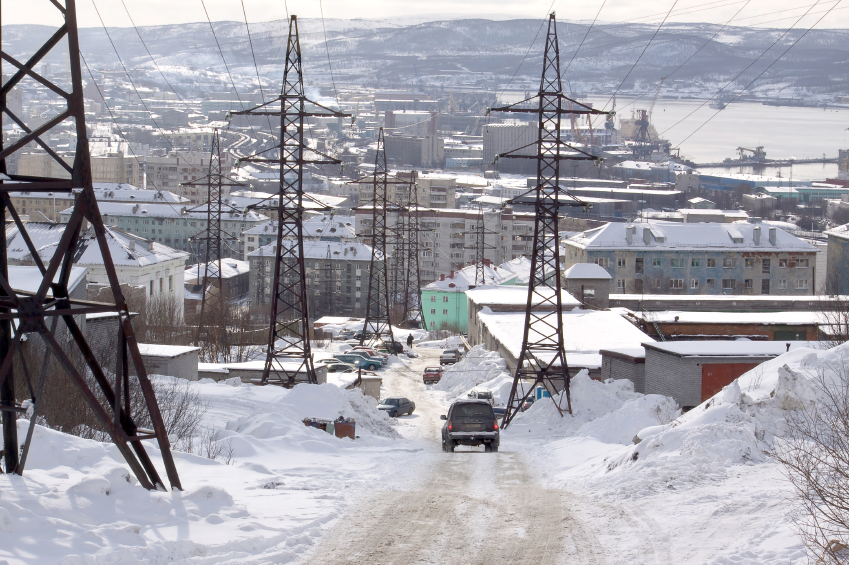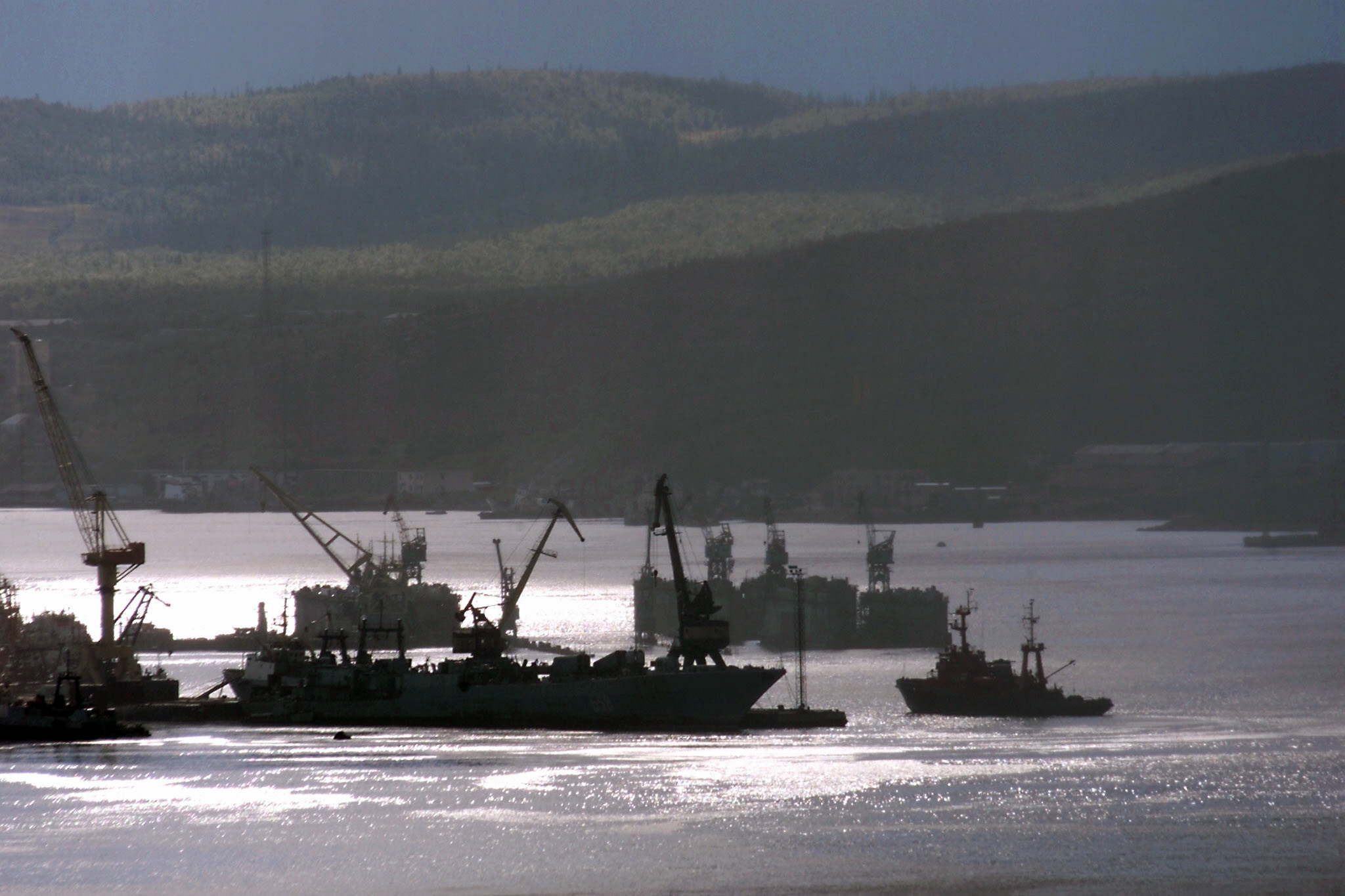Blog: China’s silk road plans could challenge Northern Sea Route

For several years now, the Northern Sea Route (NSR), the shipping lane hugging the north coast of Russia, has been touted as a shortcut between Europe and Asia.
By sailing through Russia’s Arctic waters, companies can achieve reductions of up to 24 percent off the normal sailing distance between Rotterdam and Shanghai via the Suez Canal. This shorter distance can mean travel times up to fifteen days shorter.
Several Asian shipping companies have been excitedly pursuing the development of the NSR. 2013 marked a banner year for interest on behalf of companies like China Shipping Company (COSCO) and Hyundai Glovis of South Korea. In August 2013, COSCO sent the first container ship through the NSR, the 19,000-ton Yong Sheng. During its journey from Dalian to Rotterdam, the vessel’s pioneering voyage sparked media fanfare. In October 2013, Hyundai Glovis teamed up with Swedish company Stena Bulk to undertake its first pilot service of the NSR. With all of these breakthrough endeavors, it would have been easy to mistake the Arctic for turning into a lake between Europe and Asia.
But the other shoe dropped this year. Dramatically fewer ships transited the NSR in 2014 compared to the year before. The warning signs began with the unclear opening date of the NSR. Conflicting news reports and lack of information from the Northern Sea Route Administration made it difficult to find out if the shipping route was open for business. The shipping route did not open completely until August 21 (gCaptain), although this was still earlier than in summer 2013, when the northeast portion of the passage remained closed until early September (Maritime Executive). Despite this earlier opening date, as Barents Observer reports, only 23 cargo ships transited the NSR this year. This number is just over half of the 41 ships that sailed the entire length of the NSR last year, as The Arctic Institute details in their report on the 2013 shipping season. Even more stunning is the fall in cargo volume: 2014 saw a mere 274,000 tons of cargo compared to 2013’s 1,355,897 tons. That’s a drop of 80 percent.
The shortcut on Russia’s southern perimeter

While Russia has been focusing on development of the NSR, with the planned construction of ten search and rescue centers, for instance, China has avoided putting all its eggs in one basket. The Arctic shipping shortcut is only one option it is considering, just in the same way that Arctic oil and gas represent just one potential alternative to Middle Eastern hydrocarbons.
In September 2013, Chinese president Xi Jinping announced his country’s plans to re-develop the Silk Road in a thoroughly modern manner (see The Wall Street Journal’s map). Forming the “Silk Road Economic Belt,” high-speed rail, freeways, and pipelines will criss-cross lands once traversed by caravans in the first millennium. Putting money behind Beijing’s lofty plans, in November 2014, Xi announced the creation of the $40 billion Silk Road fund. In comparison, in October 2012, The Arctic Institute reported that the country planned to invest a mere 134 billion rubles (3.4 billion euros at the time of publication, but now equivalent to only 1.9 billion euros) over the next ten years in developing maritime traffic.It’s unclear how much Russia is planning to sink into development of the NSR specifically. But one thing is certain: Russia will be hard-pressed to come up with an amount anywhere near China’s investments in the Silk Road given the economic crisis facing the Kremlin.
In a symbolic journey that can be seen as a terrestrial parallel to Yong Sheng’s 2013 voyage through the NSR, on December 9, a cargo train arrived from Yiwu, a manufacturing hub close to Shanghai, in Madrid, Spain after just 21 days. This landmark rail journey took six days less than it took Yong Sheng to sail from Shanghai to Rotterdam via the NSR. The train also did not have to navigate shifting sea ice, which will remain an issue into the future particularly since the Arctic is not consistently melting from year to year. This summer, there was actually more ice in certain parts of the NSR than there had been in previous years. Shipping lines and exporting nations like China value reliability and consistency in transportation. That’s why the Silk Road, which runs over terra firma rather than icy seas, has certain commercial appeal (although trains can still run into some extremely cold temperatures in Kazakhstan, as Ian Mount notes in Fortune Magazine).

China also possesses political aims in developing the Silk Road. Domestically, the massive transportation infrastructure project could help energize growth and development in inland China rather than on the already booming coast. Internationally, the Silk Road project fits into China’s aspirations to lead regional integration in Central Asia, turning the former Soviet republics towards Beijing and away from Moscow. President Xi announced his country’s plans for the Silk Road’s rehabilitation at Nazarbayev University in Astana, the capital of Kazakhstan.Xinhua News reports that the Chinese leader expressed a need to “improve traffic connectivity so as to open the strategic regional thoroughfare from the Pacific Ocean to the Baltic Sea, and gradually move toward the set-up of a network of transportation that connects Eastern, Western and Southern Asia.”
Connecting the Pacific Ocean and the Baltic Sea? That sounds a lot like what Moscow wants the NSR to do. Last year, three vessels sailed from the Russian Port of Ust-Luga, on the eastern end of the Baltic, to Asia via the NSR. Two went to South Korea and one to North Korea. But if China has its way, the Asian giant – now the world’s largest economy – will dominate the main transportation corridor between the Baltic and the Pacific. If all goes according to plan, that corridor will be a land transportation corridor on Russia’s southern perimeter rather than a maritime transportation corridor falling within its northern internal waters. While China will probably continue supporting both the NSR and Silk Road, supporting the former does not offer the same tangible geopolitical benefits as the latter. Chinese Premier Li Keqiang traveled at the beginning of December to Kazakhstan and Serbia, putting Central Asia and Southeastern Europe in Beijing’s sights. Add the Baltic to that list, and China is inching in on three distinct areas that Russia has traditionally seen as within its sphere of influence – not via the melting Arctic, but by retracing and revamping ancient trade routes.
What future for the NSR?
Just as sea ice extent varies from year to year, NSR development does, too. It would therefore be premature to shut the door on its future growth. Yet the current political situation does not bode well for the Russian Arctic shipping route, neither for transit shipping between Europe and Asia nor for destinational shipping to export natural resources from the Russian Arctic to foreign markets. U.S. sanctions on Russia over its activities in Ukraine have caused financing denoted in U.S. dollars to dry up and American companies to withdraw from energy projects. ExxonMobil pulled out of its joint project with Rosneft in the Kara Sea in October. Even projects that do not directly involve American companies, like the Yamal liquefied natural gas (LNG) project, are under pressure since financing is no longer available in U.S. dollars, as Bloomberg reports. If Russia was worried about the future of transit shipping along the NSR, it should be worried about the future of destinational shipping, too.
This post first appeared on Cryopolitics, an Arctic News and Analysis blog.
Related stories from around the North:
Asia: Full steam ahead for Asian icebreakers in the Arctic this summer, Blog by Mia Bennett
Canada: IMO completes Polar Code environmental rules, Barents Observer
Finland: New Finland icebreaker can operate sideways with asymmetrical hull, Yle News
Iceland: 10 takeaways from the 2014 Arctic Circle Assembly, Alaska Dispatch
Russia: Northern Sea Route traffic plummets, Barents Observer
United Kingdom: The British Invasion – The Arctic Circle and observer states, Blog by Heather Exner-Pirot
United States: Analysis – Time to ramp up Arctic infrastructure in the U.S., Sourabh Gupta & Ashok K. Roy





Pingback: Japan looks to Canada to keep an eye on China’s Arctic ambitions: expert – Eye on the Arctic
Pingback: Canadian Coast Guard wraps up busy Arctic season – Eye on the Arctic